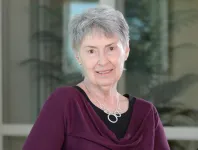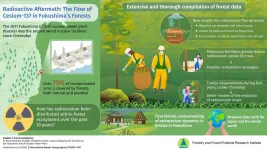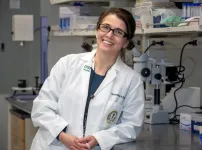A study led by Florida Atlantic University's Christine E. Lynn College of Nursing in collaboration with the Dana-Farber Cancer Institute and the University of Massachusetts Medical School, examined the extent of computer ownership, Internet access, and digital health information use in older (ages 60 and above) African Americans, Afro-Caribbeans, Hispanic Americans and European Americans. They quantitatively identified factors related to electronic device ownership, Internet access, and digital health information in 562 study participants and explored the reasons for any differences using a series of focus groups.
Results of the study, published in the Journal of Racial and Ethnic Health Disparities, revealed a deep digital health divide within the older population, which was evident in both the community sample and focus groups. Participants who were older, less educated, economically disadvantaged and from ethnic groups (African American, Afro-Caribbean or Hispanic American) were up to five times less likely to have access to digital health information than were those who were younger and more highly educated, had a higher income, or were European Americans.
The odds of owning a computer or having access to the Internet were one-fifth as likely in the African American group as it was for European Americans and one-fourth as likely for the Afro-Caribbean group. The odds of Hispanic Americans owning a computer were one-third as likely and for having access to the Internet less than one-half as great as for the European Americans. Those who received Medicaid assistance were less than one-half as likely to use either the Internet or digital health information as were those who did not receive Medicaid and a little more than half as likely to own a computer.
"Currently, digital health technology development is outpacing parallel efforts to conquer the digital health divide, which also has important implications for helping older adults get registered for the COVID-19 vaccine," said Ruth Tappen, Ed.D., R.N., F.A.A.N, lead author and Christine E. Lynn Eminent Scholar, FAU's Christine E. Lynn College of Nursing. "Portals that allow patients access to their electronic health records, decision aids that prepare patients to discuss options with their providers, making telehealth appointments with providers and so forth, needlessly, though unintentionally, excludes, marginalizes, and disenfranchises those who are older, have low incomes, have low health literacy, and/or are members of minority groups."
The results of the focus group sessions shed some light on the effects of this disparity and highlight differences in response across the minority groups represented. Interest in obtaining Internet health-related information was highest in the African Americans, Afro-Caribbeans and European Americans, and moderate at best in the Hispanic American group. Ability to afford a device that allows Internet access differed greatly across groups, and participants' expressed preferences for provider-patient information or more independent searches, and involvement in decision-making also varied considerably.
Participants in the African American/Afro-Caribbean group expressed frustration with lack of access to digital health information but appreciation for alternative sources of information. Hispanic Americans critiqued information received from providers and drug inserts, some suggesting that a positive attitude and trust in God also contributed to getting well. European American participants evaluated various digital health information websites, looking to providers for help in applying information to their personal situation.
The researchers stress that addressing this digital health divide in the older population requires attention at several levels. At the policy level, national connectivity plans are needed, and greater effort to provide universal Internet access needs to be made. Municipal broadband networks can achieve this at the local level. Eventually Internet service needs to be redefined as a necessity, not a luxury, a necessary utility like electricity and water or to become a free service supported by advertisements as are broadcast radio and television. Not only does it need to be affordable but also adequate for the job.
"Until Internet access is universal, creative use of printed materials, telephone calls, in-person groups, family assistance, individual meetings, and mailings are needed for those disadvantaged and minority older adults who remain affected by this digital health information disparity," said Tappen.
INFORMATION:
Study co-authors are Mary E. Cooley, Ph.D., R.N., F.A.A.N, Phyllis F. Cantor Center, Research in Nursing and Patient Care, Dana-Farber Cancer Institute; Roger Luckmann, M.D., M.P.H., Department of Family Medicine and Community Health, University of Massachusetts Medical School; and Somi Panday, a graduate student in FAU's Christine E. Lynn College of Nursing.
This research was supported in part by a grant from the Patient-Centered Outcomes Research Institute (PCORI), Eugene Washington PCORI Engagement Award - EAIN-2276, and University of Massachusetts Medical School, Engaging Stakeholders in Implementation of Decision Aids.
About the Christine E. Lynn College of Nursing:
FAU's Christine E. Lynn College of Nursing is nationally and internationally known for its excellence and philosophy of caring science. The college is ranked No.1 in online graduate nursing programs in Florida and No. 23 in the nation by U.S. News and World Report. In 2017, with a 100 percent pass rate on the National Council Licensure Examination for Registered Nurses (NCLEX-RN®), FAU BSN graduates, first-time test takers, ranked among the highest (No.1) in Florida and the United States. FAU's Christine E. Lynn College of Nursing is fully accredited by the Commission on Collegiate Nursing Education (CCNE). For more information, visit nursing.fau.edu.
About Florida Atlantic University:
Florida Atlantic University, established in 1961, officially opened its doors in 1964 as the fifth public university in Florida. Today, the University, with an annual economic impact of $6.3 billion, serves more than 30,000 undergraduate and graduate students at sites throughout its six-county service region in southeast Florida. FAU's world-class teaching and research faculty serves students through 10 colleges: the Dorothy F. Schmidt College of Arts and Letters, the College of Business, the College for Design and Social Inquiry, the College of Education, the College of Engineering and Computer Science, the Graduate College, the Harriet L. Wilkes Honors College, the Charles E. Schmidt College of Medicine, the Christine E. Lynn College of Nursing and the Charles E. Schmidt College of Science. FAU is ranked as a High Research Activity institution by the Carnegie Foundation for the Advancement of Teaching. The University is placing special focus on the rapid development of critical areas that form the basis of its strategic plan: Healthy aging, biotech, coastal and marine issues, neuroscience, regenerative medicine, informatics, lifespan and the environment. These areas provide opportunities for faculty and students to build upon FAU's existing strengths in research and scholarship. For more information, visit http://www.fau.edu.







